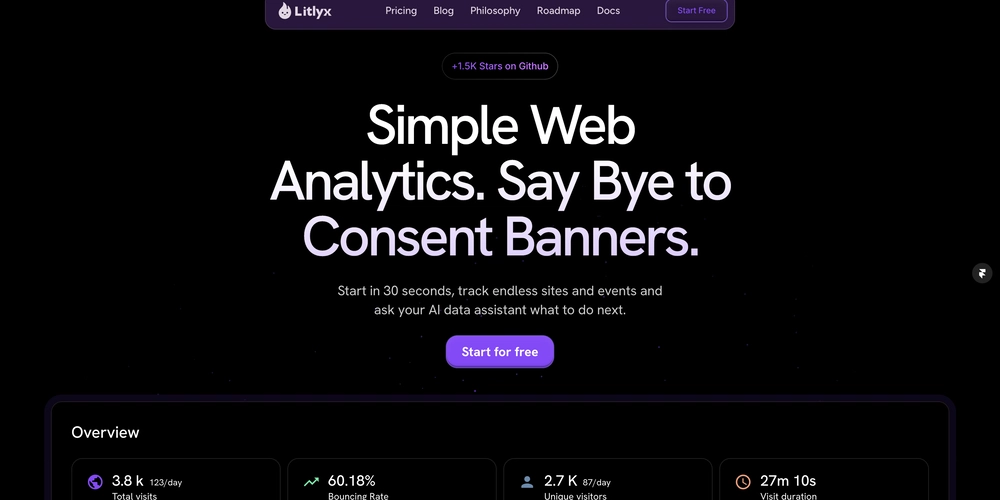I built Litlyx because I was done with all the other tools.
“I just wanted to know who’s using my product — not trade their privacy for it.”
When I started working on Litlyx, I wasn’t trying to reinvent analytics. I just wanted something that made sense.
- Something that didn’t need a PhD to read a dashboard.
- Something that didn’t need a cookie banner.
- And if it was privacy-foucsed… something that don’t look like 2005 UI.
Spoiler: I couldn’t find it.
What I tried (and why I moved on):
- Google Analytics → bloated, old, and honestly… not cool anymore.
- Plausible → great product, but I needed more technical flexibility and UI is the same from 10 years.
- Umami, Matomo, etc. → good stuff, but too focused on passive reports and their UX is steady from early 2000s.
So I built Litlyx —
A privacy-first, developer-friendly, and open-source alternative to traditional analytics.
What makes Litlyx different?
- Setup in 30 seconds — no BS. One script and done.
- 100% cookie-free & GDPR compliant — even when self-hosted.
- Custom event tracking — works with plain JS or TypeScript.
- Built-in AI assistant — ask stuff like “What are my best converting pages?”
- Made for modern stacks — Vue, Nuxt, React, Laravel, you name it.
Why am I writing this here?
Because I know I’m not alone.
There are other devs, indie hackers, and small agencies out there who:
- want clear data without creepy tracking,
- need to track events without writing 10 files,
- want to show real results to clients — without sacrificing privacy.
Sound like you?
Litlyx is open-source, and you can try it for free.
👨💻 Or dive into the code on GitHub
If you’re building something meaningful…
you deserve an analytics tool that doesn’t betray you and your users.
If you give it a shot, I’d love to hear what you think.
Antonio
Founder @ Litlyx

